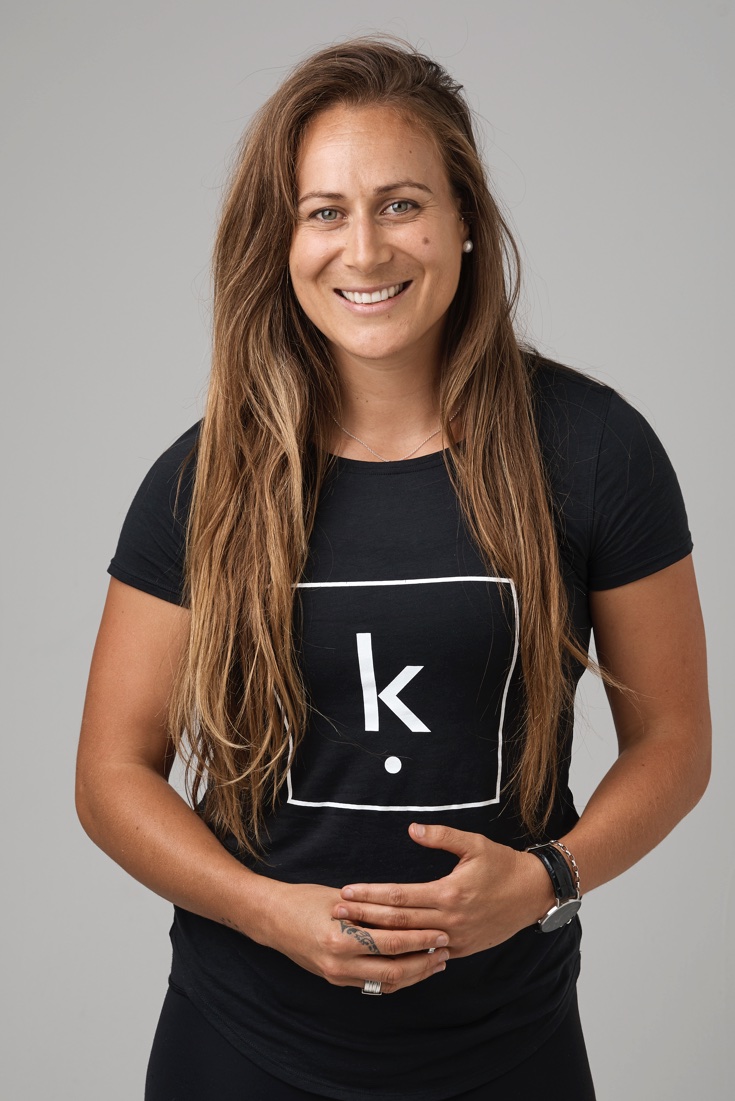Peak performance in sport.
April 28thAfter years competing in a sport internationally thinking you’ve reached your absolute peak, then learning you haven’t even come close could be somewhat overwhelming, but discus and shot put thrower Apii took the opportunity on with determination to enhance her sports performance with Kinematics.
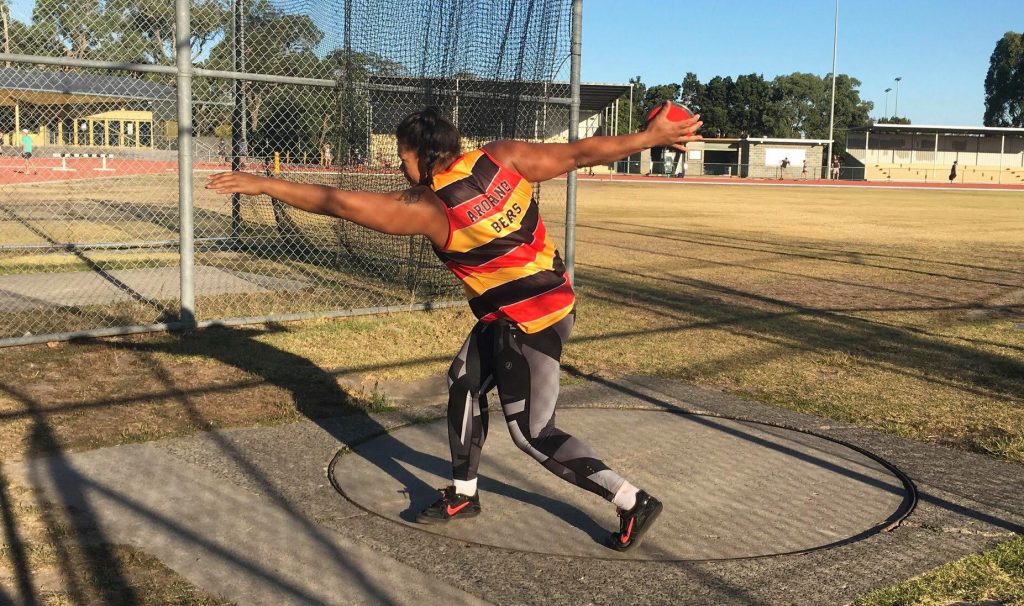
Background
Apii Tapoki has been throwing for her country, making the Cook Islands proud for almost two decades. I’ve had the pleasure of working with Apii to improve her throwing mechanics and overall performance during the past 12 months.
Last year I wrote a blog on the eight weeks I spent working with Apii treating her elbow and knee pain leading up to the 2018 Commonwealth Games. By addressing her underlying mechanical issues, we were able to greatly improve her mobility and posture. As a result of this, she became completely pain-free in her elbow and reported significantly reduced knee pain.
Mobility
Throwing a discus involves an incredibly complex sequence of movements. The throw consists of turning the body through one and a half circles and requires a high level of technical skill. The aim is to generate the highest possible force and transfer this force optimally through each phase to the final discus release.
In order to complete this complex sequence of movements efficiently, there must first be enough mobility throughout the kinetic chain (in particular the thoracic spine and hips).
In the case of Apii, she initially had reduced right midfoot, ankle and hip mobility as well as reduced thoracic spine mobility which was preventing her from achieving both maximum force generation and efficient force distribution. As a result, she was placing increased stress on the soft tissues around her knee and elbow leading to pain.
Having functional and sport-specific mobility is arguably one of the most important foundations to build in order to improve sporting performance. In the case of Apii’s throwing sport, you don’t need as much mobility as a gymnast, but you need more than a long-distance runner.
Although Apii felt great directly following her mobility-focused treatment sessions, the results weren’t long-lasting. It’s one thing being able to move through a certain range, it’s another thing altogether to have control during a complex movement, particularly in a high force throwing sport like discus and shot put.
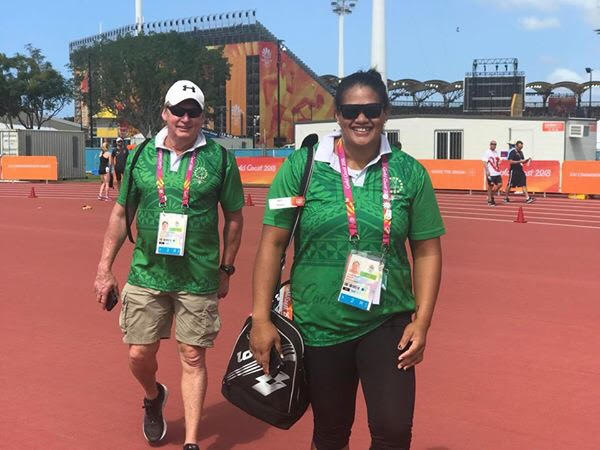
Strength and Conditioning
Incorporating strength and conditioning into Apii’s training has been a huge focus this year. Although Apii is incredibly strong, we identified some ‘energy leaks’ in her throwing technique. These were mainly due to Apii having reduced pelvic stability and trunk control. All exercises were prescribed with the focus on correcting these inefficiencies and improving movement patterns by targeting myofascial slings.
Everyone knows of these two body systems:
- Skeletal system
- Muscular system
However, something that is often not thought about in exercise rehabilitation is the myofascial sling system.
Myofascial Slings
Myofascial slings are anatomical interconnections made up of fascia, muscles and ligaments that provide stability and mobility to the body. These slings run in a line from the top of your body down your legs and can be longitudinal or oblique i.e. either run in a straight line or across your body. When these slings move well, they help us move better, produce more force, and create more speed. However, when there is a weak link in the chain, it can have a huge effect on movement patterns and cause inefficiency and injury. Therefore it is important to address the chain as a whole, rather than isolating single muscle groups.
There are a number of different exercises that were incorporated into Apii’s training program, but I will just outline three to provide examples of targeting different myofascial lines in order to improve the efficiency of force transfer through Apii’s body throughout her throw.
Spiral sling
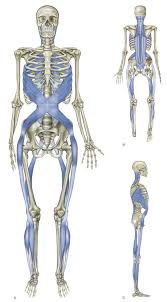
The spiral sling maintains stability across all planes of body movement, starting at the arch of the foot up and running up to the base of the skull and back to the foot. It is particularly important for preventing imbalances with rotation and lateral movements and is therefore essential for throwing actions. The following exercise is one of the exercises we have incorporated into Apii’s program to target the spiral sling.

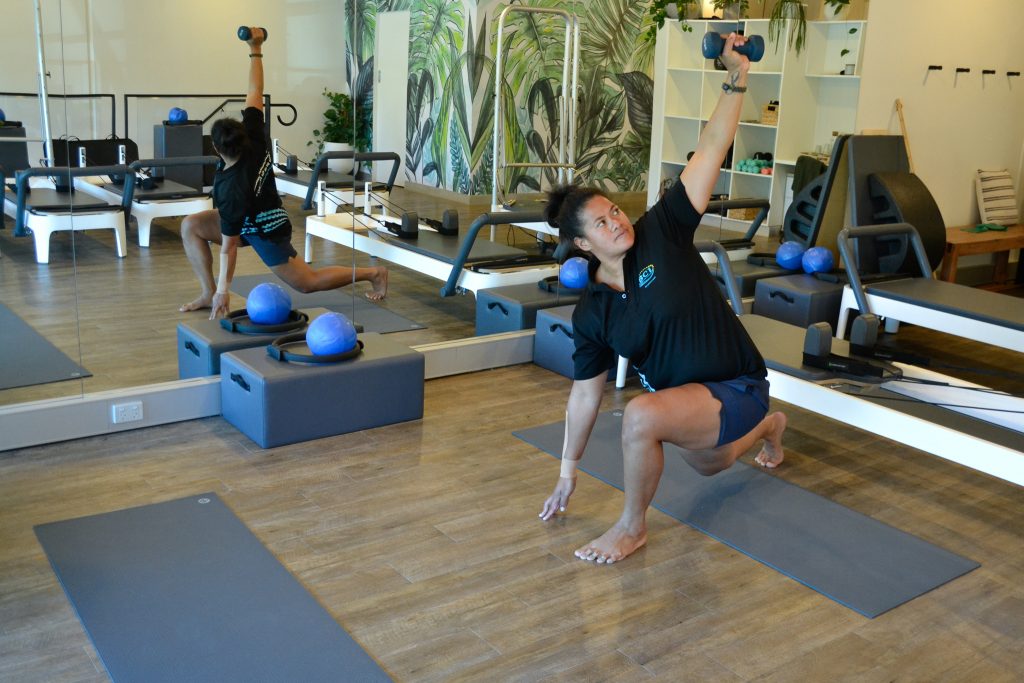
Anterior oblique sling
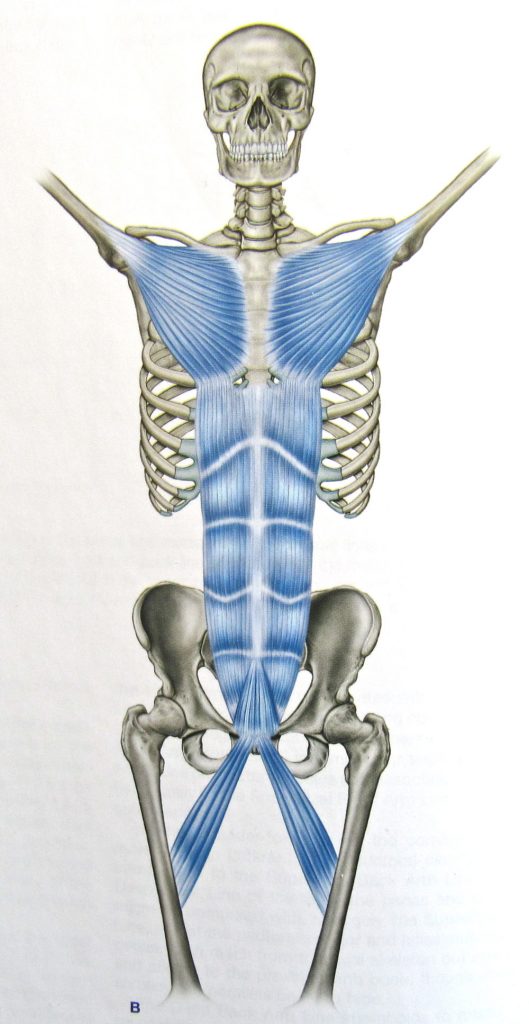
This sling system works to stabilise the pelvis by the adductor and opposite oblique firing together. As shown below, Apii is doing a side lunge while stabilising the weight out in front. This can be further challenged by rotating at the trunk. The pelvis should be stable during this exercise, back locked in, core and glutes switched on. NB: As the body functions as a unit – a lot of the lateral stabilisers will be working hard here also.

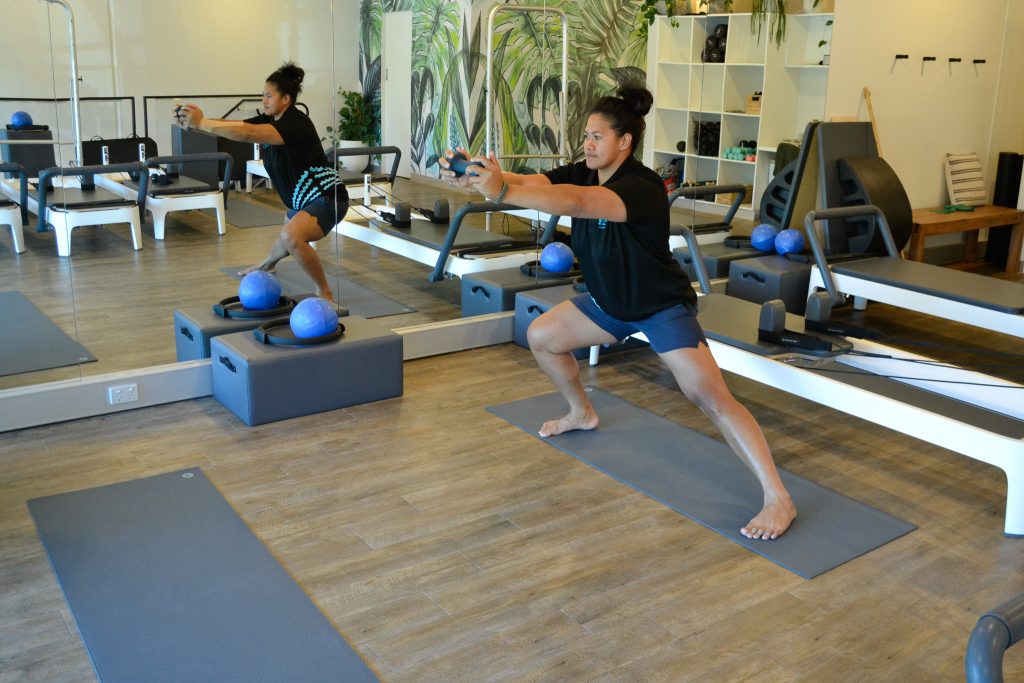
Posterior oblique sling

In this exercise, the glute max works with the opposite latissimus dorsi (connected by tension through the thoracolumbar fascia). This sling works to produce energy, fight rotation of the pelvis and help create more efficient movement when throwing.
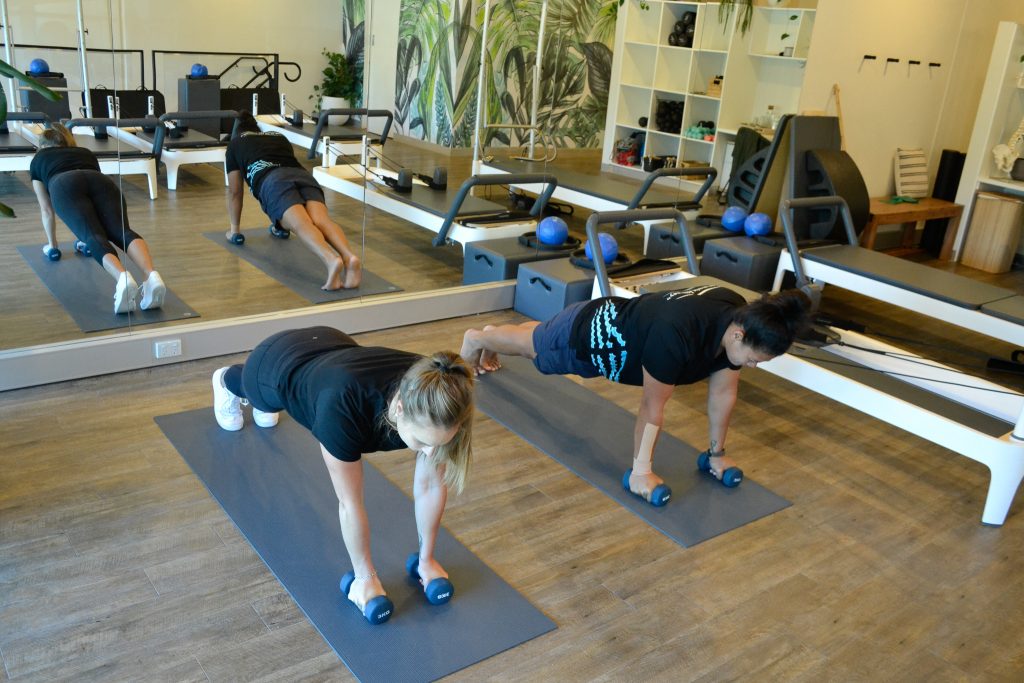
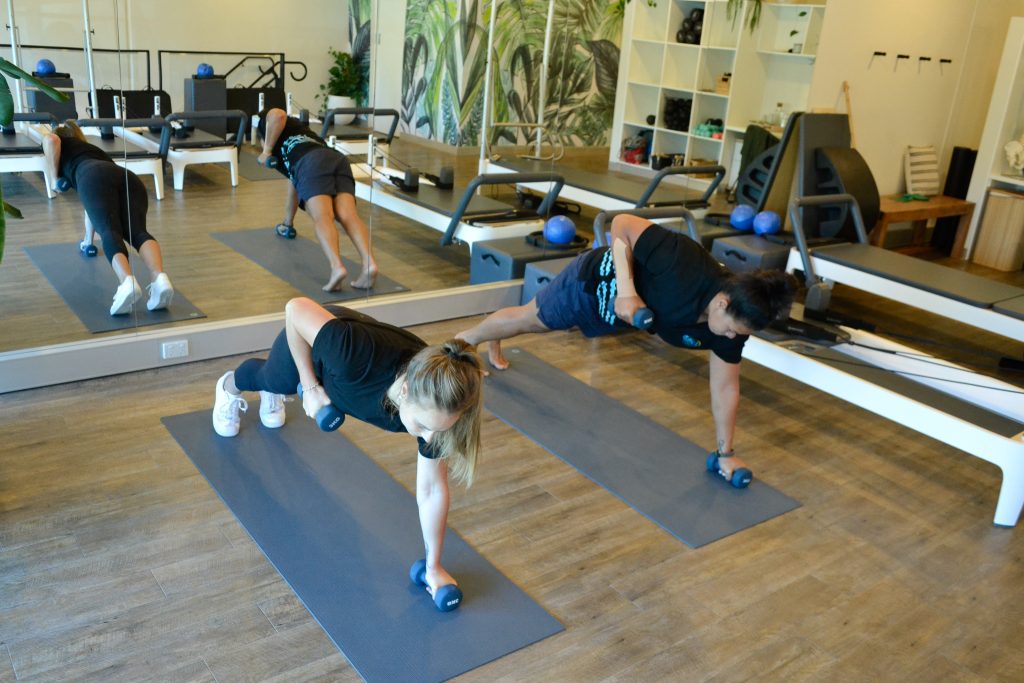

Results
So far Apii has found a huge benefit in her sports performance, adding 2 metres onto her discus throw this year compared to her previous throws last year. Additional to the noteable improved performance in her throwing distance, Apii reports “my body has never felt so good” and “I’m so happy, I look forward to training every day knowing I’m pain-free and able to see my results improve every day in the gym and on the field”.
There are other slings to consider and many more exercises we have introduced into Apii’s training, but this is just a snippet to demonstrate how effective incorporating the concept of myofascial slings into strength and conditioning can be for performance.
Identifying inefficient movement patterns and correcting these by improving sports-specific mobility and control through sport-specific strength and conditioning (and manual therapy) is crucial for every athlete. Not only has Apii dramatically improved her performance, but she has also increased her confidence and greatly reduced her risk of future injury.
At Kinematics we aim to empower each individual. This empowerment comes from education and guidance to ensure our clients have a better understanding of their body and how to get it functioning optimally.
Apii is a role model in her community and country and she has shown you can come from a small population and still create great opportunities from hard work and dedication. I’m so proud of Apii and we are both excited to continue working together towards getting her to peak at the South Pacific Games in Samoa in July.
